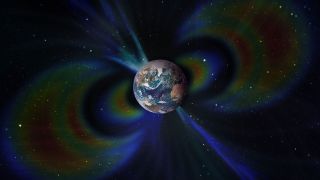Eternal inflation is a hypothetical
inflationary universe model, which is itself an outgrowth or extension of the
Big Bang theory. According to this theory, the inflationary phase of the universe's expansion lasts forever throughout most of the universe. Because the regions expand exponentially rapidly, most of the volume of the universe at any given time is inflating. Eternal inflation, therefore, produces a hypothetically infinite
multiverse, in which only an insignificant
fractal volume ends inflation.
The idea of the inflation of the Universe started in the 1970's when a belief developed that within nanoseconds of the BIG BANG, the universe expanded exponentially.
But Stephen Hawking does not agree with that theory and believes that external inflation does not occur.
Eternal inflation emerges because, in the very early universe, the quantum fluctuations in the field that drives inflation are as big as the field’s average value. But Hawking argues that under those conditions one cannot simply carry on with Albert Einstein’s general theory of relativity, but instead must use a maneuver like Maldacena’s to view the entire situation in a space with one less dimension. In that alternative space, things are more tractable, they claim, and the physics does not lead to eternal inflation. Instead, a single, well-behaved universe merges.
In 1997, Argentine-American theorist Juan Maldacena considered a volume of space in which gravity was at work. It’s like saying whatever goes on inside a can of soda can be captured by a theory describing only what’s happening on the can’s surface.
So in Hawking’s through the principle of holography, the very early universe should be described by a theory with just three spatial dimensions and no time.
And, while this author is no theoretical physicist, I wonder quite innocently I would have to say, where does time come from when it finally appears? And if it does finally appears which we all can agree that it does, then what caused time to be created? And, can time's creation be attributed to the BIG BANG or to our Creator?
















